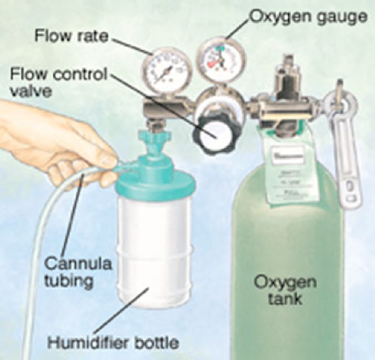
Watch for Signs of Hypoxemia (Not enough oxygen in the blood)
A person who requires oxygen can develop low oxygen levels in their blood easily, because of their health condition. Any change in activity or increase in oxygen needs might cause hypoxemia.
For example, too much exercise, removing an oxygen mask during bathing, a fever, or removing a mask because it becomes uncomfortable can trigger hypoxemia.
Skin Care
When an oxygen mask or cannula is left in place for several hours, the skin of the face, nose and behind the ears can become irritated.
Routine care is needed to prevent injury to the skin. Use caution when caring for the skin as you do not want to discontinue oxygen use for any length of time. Consult with your home health nurse about the best approach to use.
A Home Oxygen Provider (HOP) is usually a durable medical equipment (DME) or home health service that offers 24-hour emergency service and can be reached through an answering service. This gives you the ability to contact the HOP in an emergency, such as a power or equipment failure.
The HOP will provide a backup system or extra oxygen cylinders in the event of a power outage. This is important if the person is on an oxygen concentrator and there is a chance that the power may be out for a long period of time. When using a concentrator, contact the electric company and tell them that you are caring for someone who relies on electricity for their oxygen. The electric company will keep this information on file and it allows for priority when re-establishing service.
When a person is on liquid oxygen, the reservoir is a back-up system since liquid oxygen does not use electricity to operate.
When you care for someone receiving oxygen, make these daily checks:
The HOP will tell you how best to clean oxygen equipment.
The amount of oxygen in a system varies by the type of system. Talk with your HOP about how to figure the length of time a tank or cylinder will last. The provider will give you a timetable to use to estimate the number of hours of oxygen left in a system.
The amount of oxygen available will vary by how much oxygen the person uses. For example, a full 625 liter compressed tank will provide oxygen for 10 hrs at a rate of 1 liter per minute. The same tank will provide oxygen for 3 hrs at a flow rate of 4 liters per minute.
Always be sure you have an ambulatory tank which will allow you to get where you are going and back, without running out of oxygen. This may mean carrying an extra tank with you to switch out, in case the first one runs low.